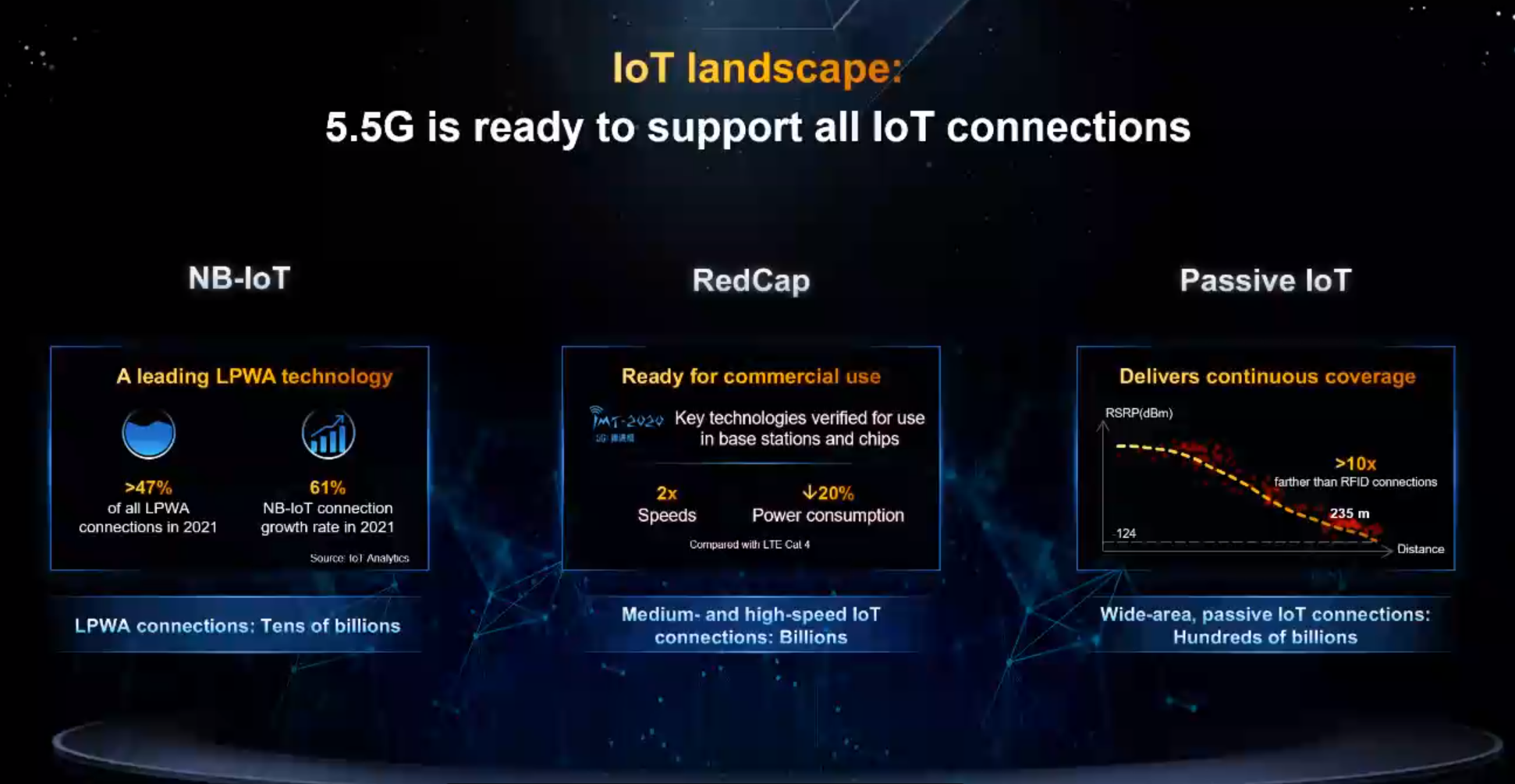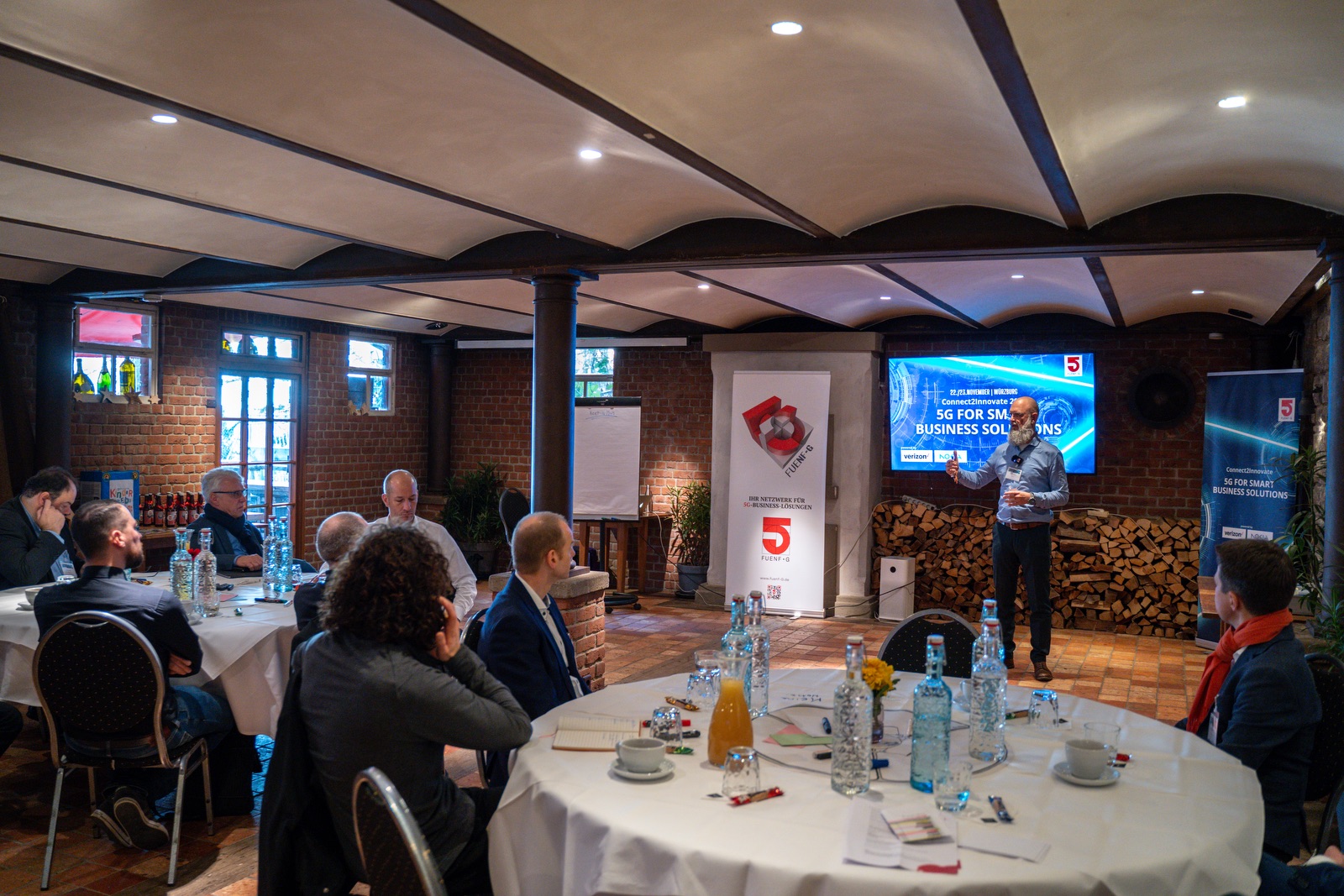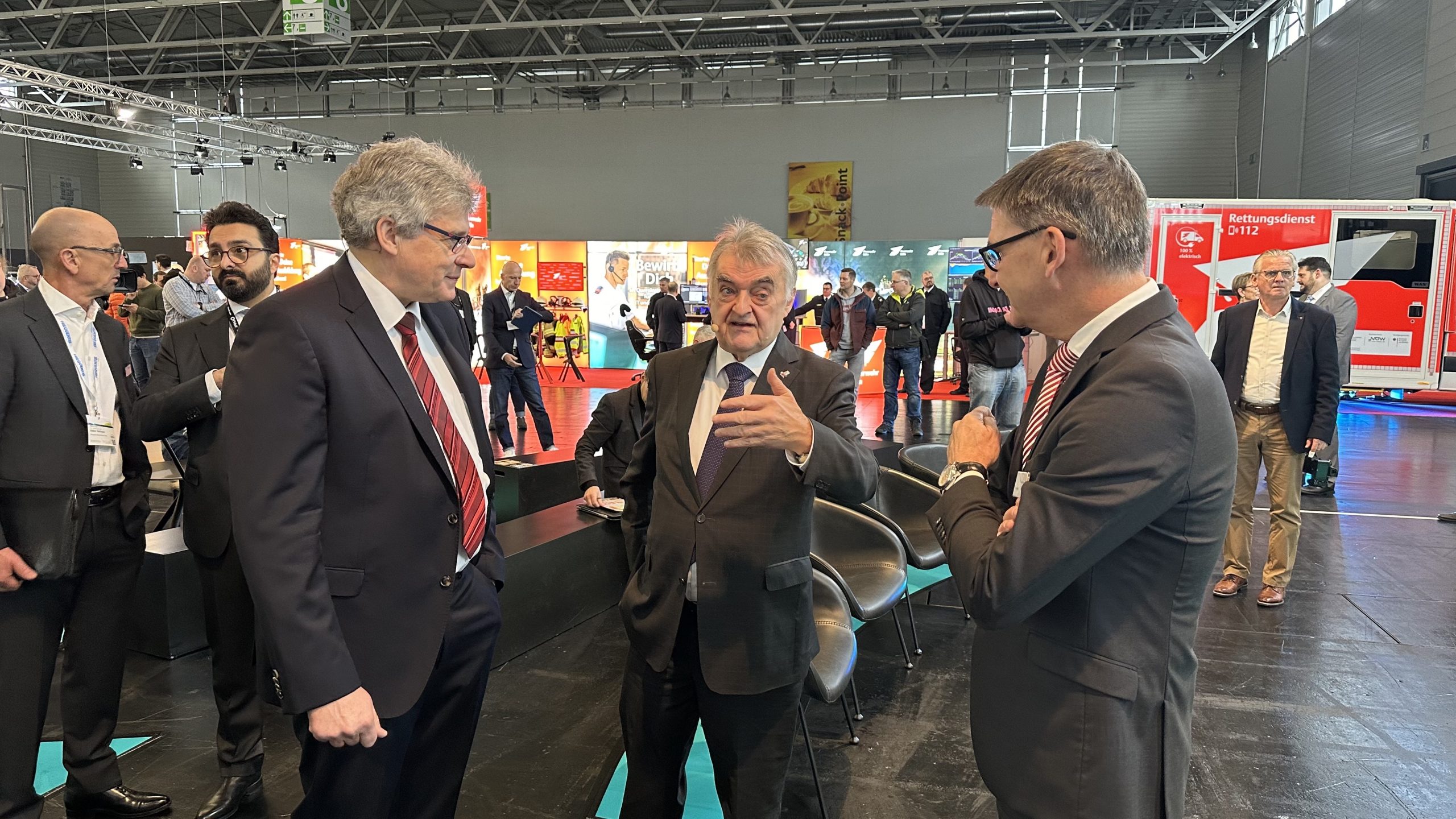As the capabilities of 5.5G grow, the benefits for IOT applications in industry also increase. (Image: Huawei)
Development in mobile communications is constantly in a flow. As a result, it is not always entirely clear what state standardization and application are in at the moment. In a press briefing, Huawei used the approaching achievement of 5.5G to clarify its own definition of the scope of performance.
In a press briefing following the Mobile Broadband Forum in Bangkok, Huawei’s Chief Security Officer in Germany, Michael Lemke, provided insights into the state of mobile development towards 5.5G. First of all, he emphasized the economic benefits of 5G and its rapidly growing usage, especially in the Asian market. Impressively, he said, the economic leverage is very high, primarily in the consumer sector. However, connectivity is also expanding and value is being created, especially in distributed B2B applications, such as the usage on waterways, widely distributed networks or in the logistics sector.
These positive developments would pick up speed significantly now that 5.5G is within reach. While the functional triangle of 5G today is
- eMBB (Enhanced Mobile Broadband)
- URLLC (Ultra Reliable Low Latency Communications)
- mMTC (Massive Machine Type Communications)
and thus already allows for Gbit/s throughput and connections in the order of ten billion, the next step would see a tenfold increase in performance. For some time now, Huawei has been describing the functionalities
- Real-time broadband communications (RTBC)
- Uplink-centric broadband communications (UCBC)
- Harmonized communications and sensing (HCS)
as necessary and key application scenarios. “We thus see 5.5G as an important milestone on the way to a smart world,” says Lemke. Looking at the 3GPP standardization roadmap, he sees realization within reach: With Release 18 comes the once again expanded eMBB. Particularly exciting from his point of view are functions such as Passive IoT, in which a sensor can generate its response energy from radiated power. A function that currently works at a distance of 230 m. High-precision positioning is also a prerequisite for many applications – and has therefore been demanded by the industry for some time. This, too, would be included in a then frozen Release 18.
Digital transformation a question of mindset
Lemke sees a significant trend in the transformation of industry: moving away from assembly line production to island production, which works with highly flexible design of the individual work steps and mobility of the means of production. Here, too, the issue of higher localization accuracy plays an important role. As a second point, Lemke mentions the improvements in uploading data to the cloud. Here, large bandwidths are needed to make meaningful use of the digital twin in production: “Increasing the uplink to 1 bit/s is extremely important to drive these use cases forward,“ Lemke says.
However, Lemke confirms when asked by FUENF-G, transformation in Europe in particular is not only hinged on technological issues, but also on mindset. “Transformation is a process to start, I have to think big,” Lemke emphasizes. In China, Huawei’s home market, he says, success comes from clear demand from the market.The key drivers, he says, are to
- reduce hazardous activities,
- enable predictive maintenance,
- remote applications, and
- implementing the digital twin.
“These are the success scenarios in China. Here, the market is already reaping a lot of benefits from the use of 5G,” Lemke emphasizes.
3GPP works from Huawei’s perspective
Finally, the company representative emphasizes the 3GPP committee, which functions very well from Huawei’s point of view: the ecosystem of the industry that has gathered in the 3GPP is a very potent one. From his point of view, the question of an alternative does not arise. “From our point of view, the cooperation works very well to organize technological progress in a global cooperation. 3GPP is one of those excellent working global cooperation scenarios.”









Leave A Comment